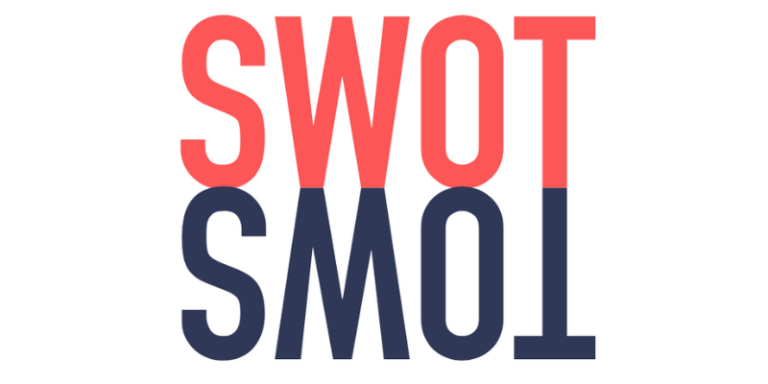In today’s dynamic business environment, organisations must continuously assess their internal capabilities and external challenges to stay competitive. SWOT (Strengths, Weaknesses, Opportunities, and Threats) and TOWS (Threats, Opportunities, Weaknesses, and Strengths) analyses are strategic tools that help organisations understand their current situation, identify areas for improvement, and make informed decisions. These frameworks are widely used in business planning, supporting continuous improvement and the development of strategies that align with organisational goals.
1.0 Understanding SWOT and TOWS Analyses
1.1 SWOT Analysis
SWOT analysis is a strategic planning tool used to evaluate an organisation’s internal strengths and weaknesses, as well as external opportunities and threats. Strengths and weaknesses are internal factors that are within the organisation’s control, such as resources, capabilities, and processes. Opportunities and threats are external factors that the organisation cannot control, such as market trends, economic conditions, and competition (Humphrey, 2005).
- Strengths: These are the positive attributes that give the organisation a competitive advantage. They may include a strong brand reputation, a skilled workforce, or proprietary technology.
- Weaknesses: These are the areas where the organisation is at a disadvantage. They may include outdated technology, limited financial resources, or poor customer service.
- Opportunities: These are external factors that the organisation can leverage to its advantage. They may include emerging markets, technological advancements, or regulatory changes.
- Threats: These are external challenges that could harm the organisation. They may include new competitors, economic downturns, or changes in consumer behaviour.
1.2 TOWS Analysis
TOWS analysis is an extension of SWOT analysis, with a focus on the external environment before considering internal factors. This approach helps organisations develop strategies that are more responsive to external challenges and opportunities (Weihrich, 1982). By starting with threats and opportunities, TOWS encourages a proactive approach to identifying risks and leveraging opportunities before addressing internal capabilities.
2.0 Applications of SWOT Analysis
SWOT analysis is a versatile tool that can be applied in various contexts to support business planning and decision-making. Some common applications include:
2.1 Market Positioning
SWOT analysis helps organisations understand their competitive position in the market. By analysing strengths and opportunities, businesses can identify unique selling points (USPs) and differentiate themselves from competitors. Conversely, by addressing weaknesses and threats, they can mitigate risks and strengthen their market position (Piercy & Giles, 1989).
2.2 Commercial Viability
Before launching a new product or entering a new market, organisations use SWOT analysis to assess commercial viability. This involves evaluating whether the organisation has the necessary strengths to succeed and whether the market presents favourable opportunities. It also involves identifying potential threats that could jeopardise success and weaknesses that need to be addressed (Kotler & Keller, 2016).
2.3 Launching a New Product
SWOT analysis is critical during the product development phase. By identifying internal strengths, such as R&D capabilities, and external opportunities, such as unmet customer needs, organisations can tailor their product offerings to meet market demands. Additionally, by understanding potential threats, such as competitor products, and internal weaknesses, such as limited production capacity, organisations can develop strategies to mitigate these risks (Ansoff, 1987).
2.4 Methods of Sales Distribution
When deciding on sales distribution methods, SWOT analysis helps organisations determine the most effective channels based on their strengths and market opportunities. For example, a company with a strong online presence might leverage e-commerce platforms, while another with a robust retail network might focus on physical stores. SWOT also helps identify potential threats, such as changes in consumer buying habits, and weaknesses, such as logistical challenges, which could impact distribution effectiveness (Jobber & Ellis-Chadwick, 2019).
3.0 Internal and External Exploration of Organisational Situation
A comprehensive SWOT analysis involves both internal and external exploration. Internally, it examines the organisation’s resources, capabilities, and processes. This internal assessment helps identify areas where the organisation excels and areas that require improvement. Externally, SWOT analysis explores the market environment, including competitors, customer behaviour, and industry trends. This external exploration helps organisations anticipate changes and adapt accordingly (Johnson, Scholes & Whittington, 2008).
4.0 The Role of SWOT Analysis in Decision-Making and Strategy Development
SWOT analysis plays a pivotal role in decision-making by providing a structured framework for evaluating the organisation’s current situation and potential strategies. By identifying strengths, organisations can leverage these to seize opportunities and counteract threats. By acknowledging weaknesses, organisations can take corrective actions to minimise risks and improve performance (Hill & Westbrook, 1997).
Furthermore, SWOT analysis is instrumental in strategy development. It helps organisations prioritise strategic initiatives by aligning them with internal strengths and external opportunities. It also guides the creation of key performance indicators (KPIs) to measure the success of these strategies. For example, if a SWOT analysis identifies customer service as a weakness, the organisation might develop a strategy to improve service quality, with KPIs focused on customer satisfaction and retention rates (Kaplan & Norton, 1996).
SWOT and TOWS analyses are essential tools for strategic decision-making and business planning. By providing a clear picture of the organisation’s internal and external environment, these frameworks support continuous improvement and the development of strategies that align with organisational goals. Whether used for market positioning, assessing commercial viability, launching new products, or deciding on sales distribution methods, SWOT and TOWS analyses help organisations make informed decisions, develop effective strategies, and create KPIs to measure success.
References:
Ansoff, H. I. (1987) Corporate Strategy. Penguin Books.
Hill, T., & Westbrook, R. (1997) SWOT Analysis: It’s Time for a Product Recall. Long Range Planning, 30(1), 46-52.
Humphrey, A. S. (2005) SWOT Analysis for Management Consulting. SRI Alumni Association Newsletter.
Jobber, D., & Ellis-Chadwick, F. (2019) Principles and Practice of Marketing. McGraw-Hill Education.
Johnson, G., Scholes, K., & Whittington, R. (2008) Exploring Corporate Strategy. Pearson Education.
Kaplan, R. S., & Norton, D. P. (1996) The Balanced Scorecard: Translating Strategy into Action. Harvard Business School Press.
Kotler, P., & Keller, K. L. (2016) Marketing Management. Pearson Education.
Piercy, N., & Giles, W. (1989) Making SWOT Analysis Work. Marketing Intelligence & Planning.
Weihrich, H. (1982) “The TOWS Matrix: A Tool for Situational Analysis”. Long Range Planning. 15(2), pp. 54-66.









